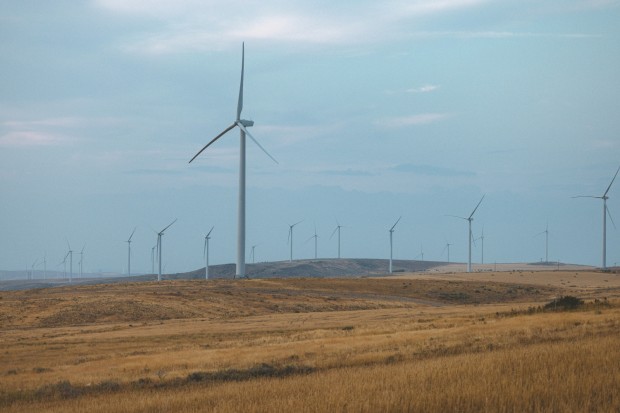The growing demand for electricity has Egypt increasingly running short on energy. Therefore, they are now in the process of getting ready to build a $10 billion wind farm project that will start operation in 2026.

(Photo : Pexels/Isaac Mitchell)
Wind Farm Project
By 2030 Egypt's energy matrix is supposed to combine 42% renewable energy. This goal will be much advanced by the 10-gigawatt wind farm, which will significantly lower the country's carbon footprint and reliance on natural gas.
Rising temperatures and the higher demand for power from an estimated 105 million people have been causing Egypt recurring power outages. As mentioned, Egypt will benefit much from the predicted large energy output of the wind farm since it will help the nation to gradually decommission certain gas-fired plants and reduce its dependency on fossil fuels.
Following completion of construction, this wind farm is expected to provide about 47,790 gigawatt-hours (GWh) of sustainable energy annually. Regarding carbon dioxide emissions, this level of renewable energy could replace over 23.8 million tons yearly, or about 9% of Egypt's total annual emissions. Accordingly, Egypt has been dealing with great pollution and the consequences of climate change, therefore this decrease is absolutely essential for the nation.
By stabilizing Egypt's energy supply, the nation would also establish itself as a regional leader in renewable energy. Other nations who are interested in developing large-scale renewable energy projects could use this project as a model because of its scale and ambition.
However, due to difficulties in acquiring land in the Upper Egypt region of Western Sohag, the wind farm, which was a joint venture between the Egyptian business Infinity and Masdar International of Abu Dhabi, experienced initial delays. The building of the project is now expected to start in the early part of 2026.
Also Read: Severe Labor Shortage: Arkansas Construction Industry Seeks New Recruits Through Apprenticeships
Energy Shortage in Egypt
Egypt's energy crisis will worsen in the next years despite the fact that short-term steps have been taken to increase LNG imports due to Egypt's difficulty meeting expanding demand locally due to a lack of long-term capital in sources of clean energy, tight global LNG markets, and diminishing natural gas production.
Based on an announcement made by Hoegh LNG on Thursday, May 2, the Egyptian Natural Gas Holding Company, which the Egyptian government owns, has signed a twenty-month agreement with Hoegh LNG-based in Norway, and Australian Industrial Energy to install a floating storage and regasification unit (FSRU) in Ain Sokhna, Egypt, in order to convert LNG into gas.
As Egypt's domestic natural gas production decreases and electricity consumption grows during the hot summer months, the agreement comes after Egypt began increasing its imports of LNG, with at least two cargoes set to arrive in April and further purchases anticipated to be made throughout the summer. This was done in order to sustain the energy supply.
The prolonged blackouts that have started since the summer of 2023 have seriously affected daily life as well as enterprises. Rural areas and areas outside of the core region have suffered disproportionately from these power outages, which lasted far longer than the intervals that were publicly announced. rtionately bad impact on rural areas and regions that are not located in the central region.
Many medical professionals said that they were forced to care for patients and deliver pregnant women using mobile phone lights, despite the fact that the government had announced that hospitals would be excluded from the blackouts.
Related Article: Wind Farms Achieve Carbon Neutrality in Just Less Than 2 Years After Construction







